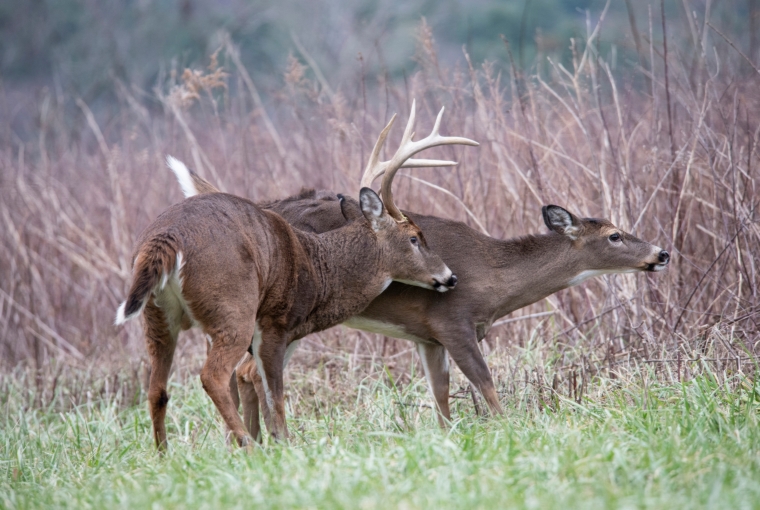
It was mid-September and my wife, Corine, and I were tucked into a ground blind, just off a field edge. The season had recently begun, but we were on our own short timeline as our first child, a girl, was due the following day.
There had been plenty of deer activity at this stand, with several making regular daytime visits. It wasn’t long before a doe and fawn arrived to feed just 18 yards from us. Shortly after that, we caught the telltale flash of a young buck cautiously moving through the poplars. Suddenly, he turned and took flight as a bigger buck came in. Once the new 8-pointer had chased off the young one, it shifted course and headed towards us before stopping suddenly to detour and run off yet another small buck.
Finally, the 8-pointer began making his way back toward the opening in front of us, and Corine and her Excalibur sealed the deal.
Following the food
Whitetail bucks cover a lot of ground during the year, in a variety of areas; where you find them in summer may not be where they will be come hunting season. Even throughout the hunt, you’ll likely see some shift in location as their needs and desires change.
Come winter, deer need shelter and food, and their patterns focus on survival.
When spring rolls around and the snow is gone, they can move freely at the same time as more plentiful food sources are emerging. Deer seek out fresh green growth wherever they can, grazing on grass, new leafy growth, and agricultural crops. It’s not uncommon to see fields dotted with feasting deer during the morning and evening.
Around April or May bucks start to develop antlers, and velvet-covered nubs emerge. By June or July, with long days and quality food sources, antler growth explodes and this continues into August, when growth stops, the blood flow to the antlers slows, and the antlers harden.
During summer, whitetail bucks are social animals and are often found in bachelor groups. They will seek out areas with quality food and mature cover, often not travelling far. In agricultural areas, mature bucks will be taking in high-quality nutrient crops like alfalfa, soybean, corn, and new growth in hay and wheat fields, though they may be hard to spot, warily accessing fields from relatively hidden areas.
Fall patterns
Mature whitetails tend to pattern quite well during early fall, creating great archery hunting opportunities for wildlife management units with seasons in September and early October. The bucks’ focus on food means they haven’t shifted into their cagey fall ways just yet. Bachelor groups will travel and feed together, though they will soon be locked in battle with each other.
If you’re scouting in farm country, glass from a distance to minimize your intrusion into the corners of these fields. Mature bucks avoid humans and you want to keep them as comfortable in their routines as possible. Using game cameras to monitor deer and learn their patterns is important, but use quality batteries and a large memory card to limit trips to check on deer or consider cellular cameras that send photos to a phone or computer.
Deer get around

Several years ago, I was scouting a new property in early September and was floored by what I saw on camera: two absolute monarchs making regular daytime visits to an open meadow. They were clearly creatures of habit, and this was their backyard. Over the next couple of weeks I saw these deer on several occasions, but never closed the deal.
On one particularly memorable occasion I watched a picture-perfect 10-point buck in full velvet at 15 yards, waiting at full draw for the shot that never came. Come late September this buck and his friend became scarce, making only the odd appearance at night, and had completely disappeared by the rut. Eventually, I realized it was a poor rut-hunting spot, as it had minimal doe traffic (not one seen in September) which meant there wasn’t much draw for bucks.
Routine will continue
Early fall sees whitetail bucks still following their summer patterns. Often, if you locate a mature whitetail making regular visits to a food source, they’ll continue this routine and will be active in daylight until well into September.
When hunting forested and cutover areas, deer will be found on good food sources. They’ll eat the green leaves of young poplars or beaked hazelnut, cedar, and other green leafy vegetation. Much like moose, deer can be found feeding along the back edges or in open grassy meadows in the evening.
Just because you don’t see much in the way of mature bucks while scouting in the summer and early fall doesn’t mean you should count that area out. It could be a sleeper buck spot during the rut or a different period. The more you hunt and scout a property, the more you’ll learn about the best times to hunt it.
Seasonal breakdown
As fall approaches, deer start shifting to high energy foods like apples and acorns where they are available. Look nearby for good, mature cover that has shelter and bedding areas, as deer will seek areas that supply both of these requirements.
Mid-October often brings what’s referred to as the “October lull,” when bucks are shifting patterns and habitat, becoming more nomadic, nocturnal, and far less predictable.
The end of October sees activity start to ramp up, as bucks enter the pre-rut stage. They’ll be on their feet, working scrape lines, sparring with other bucks, and preparing for the rut, but will still be actively feeding. I’ve had some great action in late October at last light in agricultural fields, watching bucks feed and spar in tucked-away corners.
Fall madness
November can be pure madness. Bucks follow no routine, running on hormones and pure breeding instinct. They’re on their feet steadily, searching out, chasing, courting, or breeding does, and this is their focus for the better part of November, with food taking a back seat. The buck that’s been there all season may vanish for the next three weeks, and instead, nomadic travellers may wander through. It can be a month of adrenaline and heartbreak, but it’s a time no whitetail hunter wants to miss.
During the third and fourth week of November, the rut trails off and the action slows down, as many does have been bred. Most bucks aren’t as active and will again focus on food and hanging out with other bucks. However, some warriors hang on, actively searching for those remaining unbred does. It’s a great time to hunt, as these bucks are on their feet, though I shift to less aggressive calling tactics. An estrous bleat can be effective this time of year.
Winter deer
By December, rut activity has essentially stopped, as most bucks shift their focus back to eating and surviving the winter. Some, though, will continue searching well into December for those does that weren’t bred and have gone into estrous a second, and possibly even a third time.
I’ve found deer behaviour in December depends greatly on weather. If it turns cold early and you can locate or establish a good food source in decent cover, you’ll likely see daytime buck activity.
One property I hunt has very little early-season activity and modest rut activity, but is crawling with bucks if December gets nasty. It offers mature timber for cover that’s near agricultural land. It seems deer that have been living, feeding, and rutting nearby seek shelter here for the winter, and if winter comes early, the big bucks come in droves.
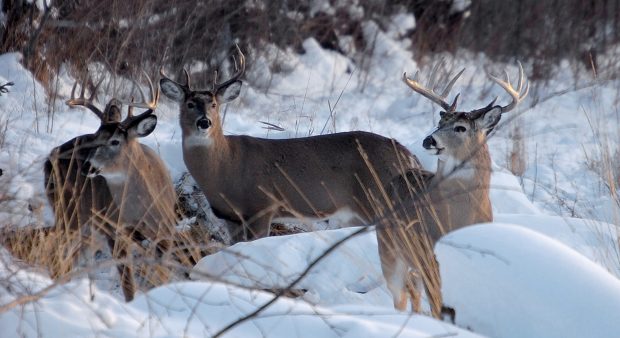
Towards the end of December and into January, deer shift to wintering areas. Habitat conditions may differ across the province, but major considerations are shelter from the snow and the ability to evade predators.
Northwestern bucks
While deer in northwestern Ontario may not yard up in way they do in other parts of the province, they do gather in areas of heavy cover, taking shelter in stands of mature conifers. During this period, bucks shed their antlers, typically around January, but as early as December or as late as April. This seems to depend on winter stress and food availability.
Across much of the province, whitetail hunters have plenty of opportunities to learn where bucks will be at each phase of the season. Take advantage of this knowledge, as Corine did, to increase your chances of success.
Sept. 1: In Thunder Bay, the start of archery season gives me a week or two to target mature bucks in summer routines.
Nov. 6: Bucks are really ramping up, on their feet in daylight, not yet locked onto does, and responsive to rattling.
Nov. 24: Many does have been bred, but mature bucks are hanging on, actively searching for those last unbred does.
Others weigh in
Drew Myers, longtime OOD contributor and serious whitetail hunter in the Dryden area says, “The best dates for hunting bucks are Nov 6 and 12. The 6th is the first day bucks really start moving and are not as spooked by hunting pressure yet. The 12th is the tail end of the chase period. With some cold temps, bucks that haven’t found does in heat tend to get a little more frantic and move more. It’s a bit of a spike in buck activity just before activity really drops off as the pairing and breeding actually starts.
Another friend and dedicated whitetail hunter Randy Verougstraete, says, “Hunting the smaller woodlots of southwestern Ontario, I have found the go-to day to be Oct. 31. Hunting pinch points that join neighbouring woodlots has produced many great sits, with as many as seven different bucks in a day.”
Rattling
Rattling is a must as the rut approaches, and when it works can be a rush. I start in mid- to late-October with subtle rattling to mimic the gentler sparring that happens before the rut. Bucks will lock antlers and push each other around, but without the intensity of the November rut.
By the first week of November, it’s time to get loud and angry. Smash those antlers, kick the dirt, break branches, make some noise. Two mature bucks fighting is not a meek affair, so make it realistic. Real rattling antlers are great if you can carry them, or leave a set hanging in your stand, but cut off the brow tines for the sake of your hands. For a more portable option, try rattle bags or pack racks.
Originally published in the Fall 2019 edition of Ontario OUT of DOORS magazine


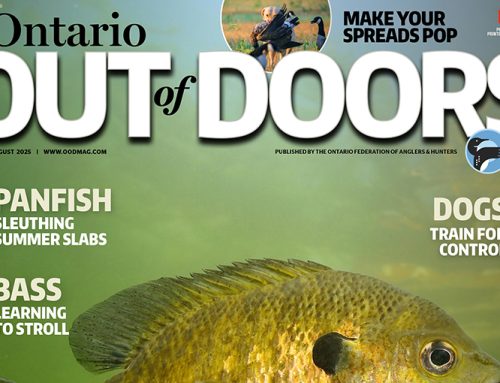
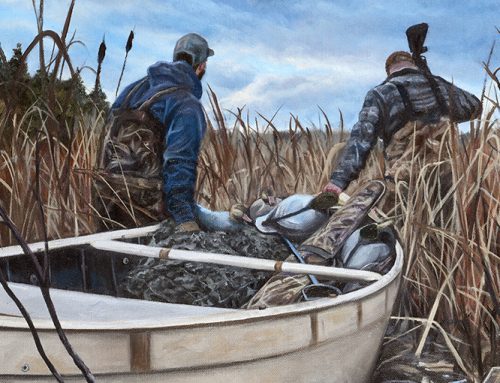
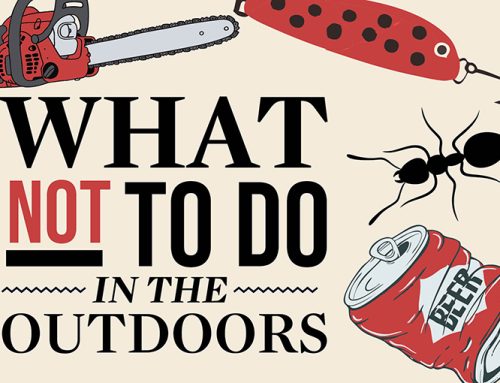
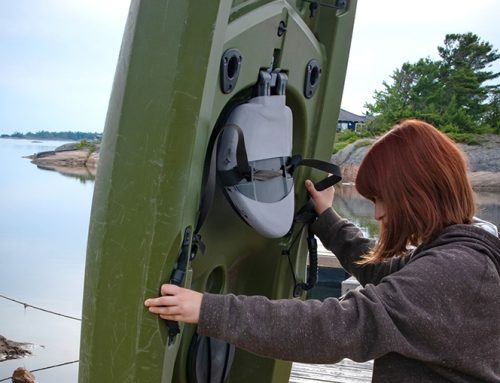
Leave A Comment